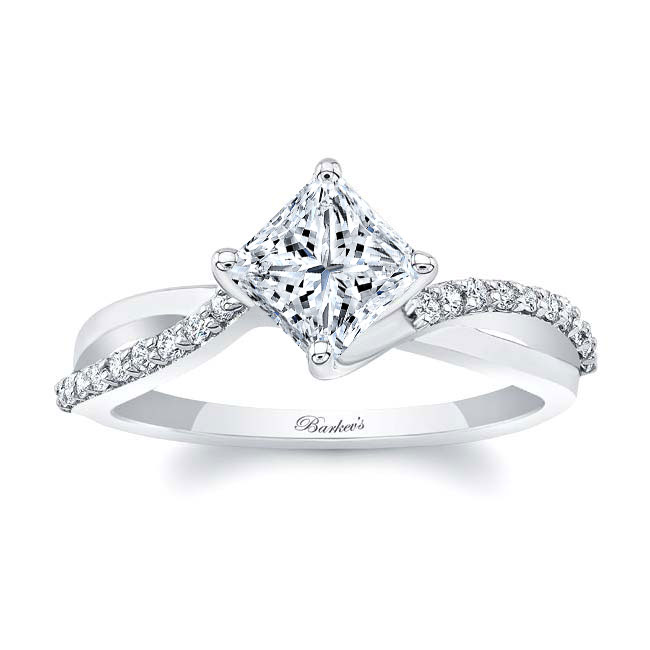When it comes to diamonds, ‘carat’ is a term you’re likely to encounter frequently, but what does it really mean? Simply put, it refers to the weight of the diamond, with one carat equaling 200 milligrams. This unit of measurement is crucial as it helps determine not just the size, but also the rarity and value of these precious stones. Understanding carats is essential for anyone interested in the finer details of diamond quality and pricing. In this guide, we’ll delve into what carats represent and how they impact diamond characteristics.
Key Takeaways
- Carat weight describes the mass of a diamond and is key in determining the rarity, desirability, and price—not to be confused with the size, which is how large the diamond appears.
- Other factors like cut, shape, and even the diamond’s depth affect its overall appearance and can create an illusion of being larger or smaller than its actual carat weight.
- Opting for a diamond just shy of ‘magic sizes’ like a full or half carat can result in significant savings, and utilizing settings like halo can enhance the perceived size of the stone.
The Essence of Carat Weight in Diamonds
The term “carat weight” transports you into a realm where even the smallest milligram is of considerable importance. It refers to the actual physical weight of a diamond, with one carat precisely equating to 200 milligrams. Breaking it down further, each carat contains 100 ‘points,’ enabling exact specifications and underlining the precision in which these treasured gems are assessed. This detailed measure has its roots steeped in history. Originating from an era when traders utilized remarkably consistent carob seeds as standard weights on balance scales.
In today’s diamond industry, the concept of carat weight wields substantial influence as it doesn’t just represent the gemstone’s mass but also conveys its scarcity and appeal which directly affects the price of a diamond engagement ring.
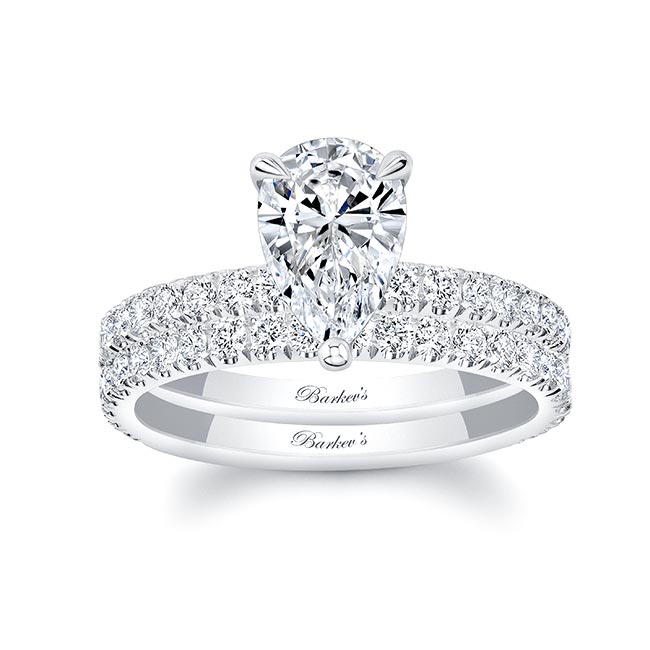
The Modern Carat System
The modern carat system has been fine-tuned and standardized to convey the weight of a diamond with unambiguous precision. In this universally accepted system across the diamond industry, one carat is defined as 200 milligrams. A carat is subdivided into 100 points, which allows for precise communication about diamond carat weights among jewelers and gem enthusiasts.
From the sought-after one-carat diamond adorning an engagement ring to the understated beauty of a half carat stone, this meticulous system of measuring diamonds ensures that every detail regarding their size is captured accurately.
Diamond Carat vs. Size
Interestingly, while the term “carat weight” may imply a direct correlation to the size of a diamond, this isn’t quite accurate. The carat is actually a unit that measures the weight of diamonds rather than their apparent size as perceived by our eyes. Essentially, it’s about how much a diamond weighs and not strictly its visual dimensions.
Take for example two diamonds both weighing in at one carat. Despite sharing identical carat weights, they could appear different to an observer due primarily to variations in cut and shape. This divergence means that when comparing two such diamonds with equal carats, you might find considerable differences in their visible sizes—thus affecting their impact and appeal.
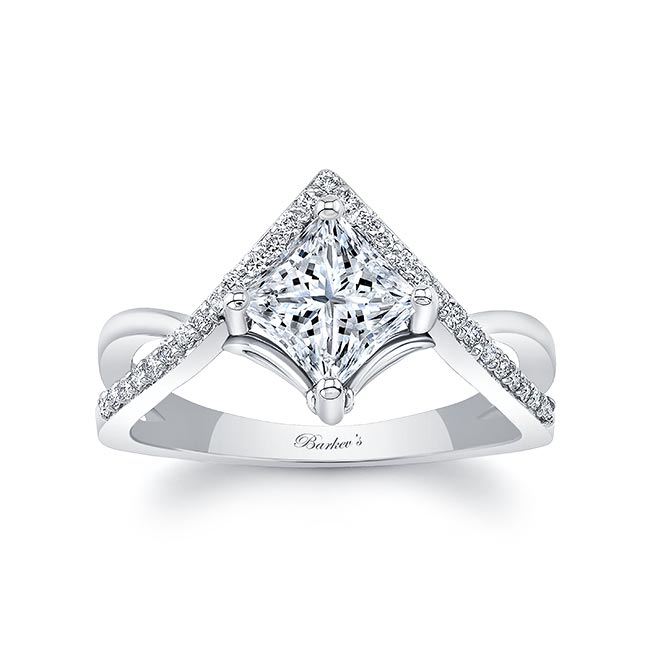
Factors Affecting Diamond Appearance
Other elements that can alter the apparent size and look of a diamond include its shape, cut quality, and depth. This creates an optical illusion where certain shapes and cuts may give off the impression that the diamond is larger than it actually is in terms of carats. When choosing your dream diamond engagement ring, these factors are extremely important to consider so pay attention and get informed.
Conversely, a diamond expertly crafted to enhance its depth may seem more petite compared to one with a shallower cut which might present itself as seemingly bigger. Such considerations are crucial for those aiming to strike just the right chord between dimensionality, brilliance, and financial outlay.
The Role of Cut
Shifting our attention to the diamond’s cut, it’s pivotal in enhancing both its apparent size and luminosity. The specific arrangement of a diamond’s facets—whether they’re brilliant, step, or mixed cuts—affects how light is refracted within the gemstone. Consequently, this impacts the visual size of the diamond because a well-crafted cut can make it look bigger as more light bounces off each facet.
Carat weight alone doesn’t tell you everything about value. Where that weight is distributed matters immensely. An inadequately cut stone may carry excess weight in non-beneficial areas such as its girdle – which becomes concealed once set into jewelry – contributing nothing to either aesthetics or perceived size. Thus, selecting excellent cut diamonds isn’t solely an issue of beauty but rather one of maximizing visual presence per unit of carat weight, an approach that proves beneficial especially when adhering to budgetary constraints.
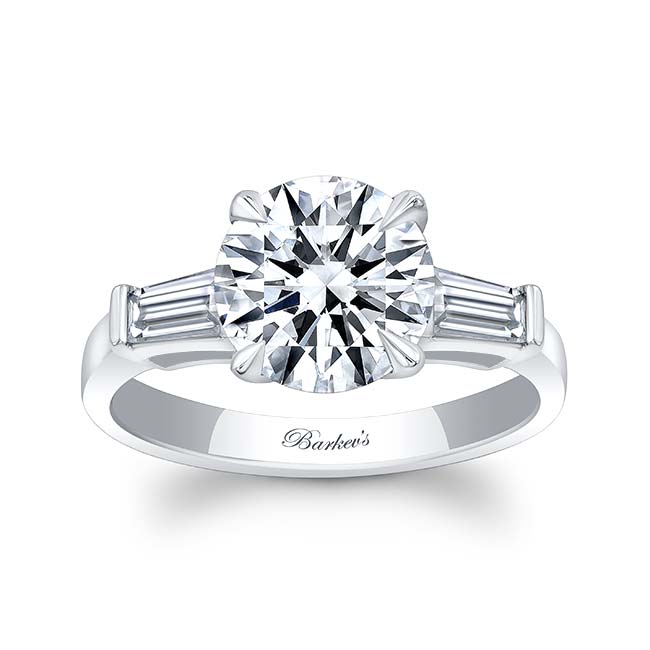
Shape Variations
The various shapes of diamonds can enhance or lessen the apparent size of these precious stones. For instance, diamond cuts such as the oval or marquise, which are more elongated in nature, give an illusion of a bigger stone due to their larger top surface area. This is akin to comparing two homes on identical plots: a sprawling ranch-style house seems larger than a quaint cottage because of how its space is distributed.
In the case of an emerald cut diamond, with its expansive open table and distinctive step-cut facets, there’s an optical enhancement that makes the stone seem greater in size by showcasing its uppermost surface area. This cleverly creates an impression that the carat weight is heftier than what it actually weighs.
Choosing the Right Carat Weight for Your Diamond
When determining the appropriate carat weight for your engagement ring diamond, it is not only a matter of individual preference but also practical considerations. Choosing the right stone involves more than what simply stands out in a jewelry showcase. It’s about selecting a gem that enhances the wearer’s hand, aligns with their physique, and fits into their daily routine. Opting for a larger diamond can indeed bring an unforgettable presence and eye-catching brilliance due to its sizeable glimmer and heftier carat weight. How large the diamond actually looks – gauged in millimeters – combined with proportion to the owner’s hand are critical elements affecting how prominently the stone features on the ring.
The key is finding harmony between one’s distinct taste and everyday usability when incorporating diamonds into any piece of jewelry such as an engagement ring or other accessories.
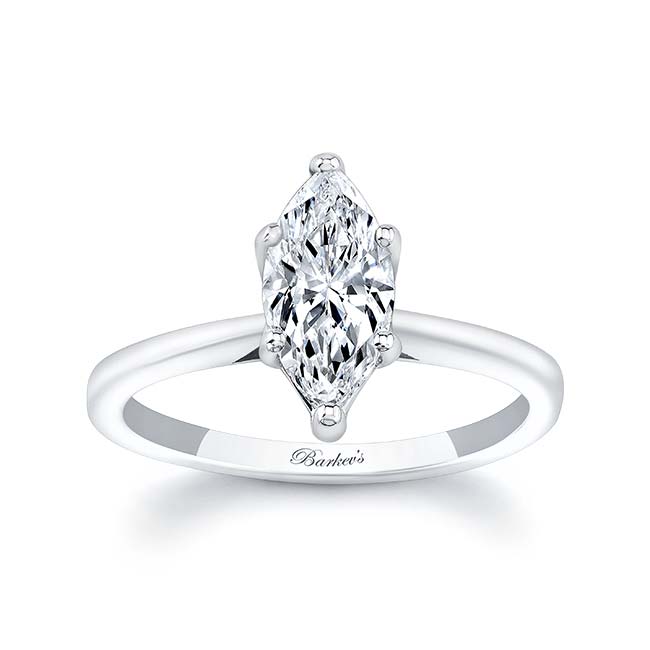
Balancing Carat Weight with Other Diamond Characteristics
While the carat weight is a crucial factor in evaluating a diamond’s appeal, it doesn’t operate in isolation. Clarity, cut, and color join it to form an essential quartet of characteristics. When dealing with larger diamonds, the carat weight can enhance these features even more significantly. Achieving a balance between quality aspects becomes pivotal.
It’s true that as the carat weight increases so often does the price. Selecting a diamond that is just slightly lower on the clarity scale might present a smart compromise – reducing cost without substantially diminishing how impressive it looks. Several attributes should be considered when looking for your ideal diamond:
- Carat weight
- Clarity grade
- Cut grade
- Color grade
- Shape
Taking into account all these elements enables you to select not only an aesthetically pleasing but also affordably priced diamond tailored to both your taste and budget.
Magic Sizes: Maximizing Value
In the diamond industry, specific weights such as half carat and full carat are known as “magic sizes” and they command a certain prestige. There’s an insider tip that can lead to substantial savings: opt for a diamond slightly under these ‘magic sizes’. For instance, selecting a 0.98-carat diamond over one that is exactly one carat could result in considerable cost reductions while hardly affecting its visual appeal.
There’s typically a significant increase in price at these ‘magic size’ benchmarks, so it’s crucial to recognize how you can maximize the perceived value of your purchase without overspending. By understanding this pricing structure, you’re better positioned to make choices where the difference in appearance is minimal but results in greater savings.
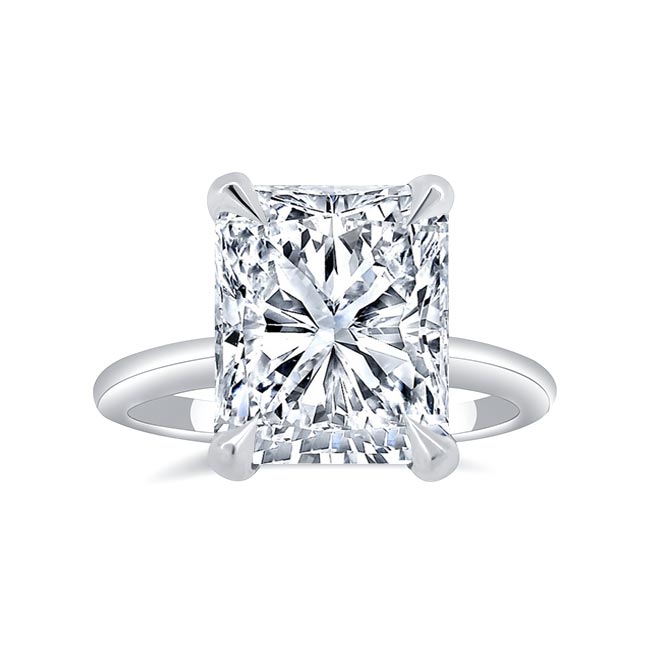
Diamond Carat Weight in Jewelry Design
In the world of jewelry crafting, the significance of carat weight extends beyond a mere numerical value. As the carat size of diamonds increases, their capacity to capture and refract light also increases, yielding a dazzling radiance that can serve as the centerpiece for any piece of jewelry—especially an engagement ring. It is this impact on visual appeal that has allowed expert jewelers like Barkev’s to imprint their legacy on engagement ring designs by artfully capitalizing on carat weight to craft accessories with both enduring beauty and breathtaking charm.
Under expert guidance from such esteemed jewelers, understanding and utilizing carat weight becomes integral during the creation stage—a principle applicable whether designing an engagement ring or selecting jewels for wedding bands or cherished anniversary gifts—guaranteeing each item remains unforgettable in its representation of life’s significant events. If you are feeling overwhelmed and need expert advice. Our diamond experts are here to help you. Simply reach out to us and we’ll make sure you make the perfect choice for the budget you have.
Total Carat Weight (TCW)
In a piece of jewelry where several diamonds are incorporated into one design, the combined carat weight of all these stones is known as Total Carat Weight (TCW). TCW represents the sum total of the weights for every diamond or gemstone within that particular piece, thus providing an aggregate indicator of both its brilliance and cost. The concept differs from ‘carat weight’ which pertains specifically to the weight of an individual diamond.
Understanding this measure becomes particularly vital in instances involving sets or pairs of jewelry because it significantly influences both their collective perceived magnificence and market value.
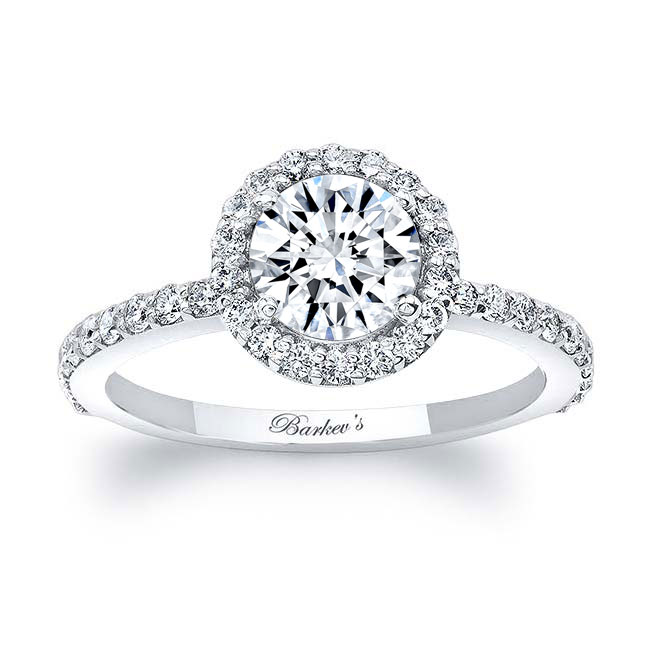
Tips for Enhancing Diamond Size and Appearance
There are ingenious methods to make a diamond appear bigger, without altering its actual carat weight. Surrounding the main gem with smaller diamonds in what is known as a halo setting can give it an enlarged look, as these tiny sparklers serve to highlight the central stone and create an effect of increased size.
Choosing a slimmer band for the setting can accentuate the diamond’s prominence by ensuring that attention is concentrated on it. This makes it seem more substantial. Expertly cutting a diamond can maximize its sparkle and shine. This enhanced radiance imparts an impression of heftiness that doesn’t correspond to its true weight in carats.
Diamond Carat Weight and Price
The fascination with large diamonds is clear, as is the substantial price associated with them. The scarcity of larger diamonds due to their rarity and the complexity in sourcing them drives up their value substantially. Not only are these precious stones rare, but they also necessitate a high degree of skillfulness to expertly cut and finish.
The carat weight exerts a profound impact on the cost of a diamond. An increase in weight corresponds to an increase in price. Consequently, even a minimal variation in carat weight—for example, between a 0.99 carat diamond and one that’s exactly 1 carat—can result in a significant escalation of its market value.
Understanding Diamond Pricing
The price of diamonds is influenced by a blend of four crucial characteristics: cut, color, clarity, and carat weight—famously referred to as the 4Cs. These attributes jointly shape both the appeal and cost of a diamond. Although the carat weight plays an important role in establishing its worth, it’s not the only factor that dictates value.
How to Maximize Your Budget
If you’re aiming to maximize the value of your investment in diamonds, there are savvy approaches you can adopt. Selecting a diamond that is slightly under a well-known benchmark size — often referred to as ‘magic sizes’ — could lead to substantial cost reductions while maintaining the aesthetic appeal you desire. Laboratory-created diamonds offer an economical alternative, delivering comparable brilliance at reduced prices alongside advantages concerning ethical sourcing.
Should you opt for lab-grown diamonds, it’s possible to secure a stone with a higher carat weight for what would normally amount to the price tag of a smaller natural diamond due largely to their more affordable pricing and typically high clarity grades. Nevertheless, many individuals continue to be drawn towards natural diamonds owing to their unique mystique and scarcity.
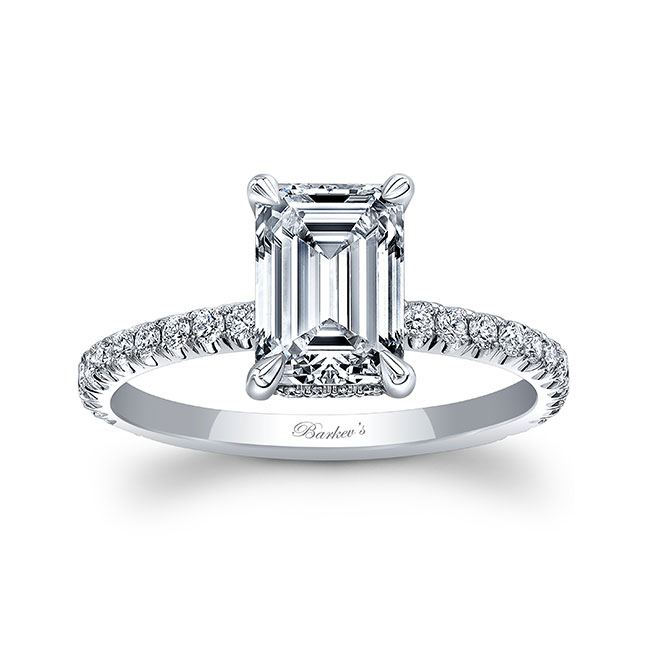
Visualizing Diamond Carat Sizes
Often, visual confirmation is key, particularly concerning the size of a diamond carat. Utilizing a chart that illustrates diamond sizes can prove essential for grasping how various shapes of diamonds measure up against different weights in carats. These references are quite beneficial when you’re trying to envision what a certain weight of diamond might look like adorning your finger, which can assist significantly in choosing the right one.
Diamond Size Chart
A guide on diamond carat size serves as a crucial tool to demystify the subject of carats, offering exact millimeter measurements and average dimensions for different diamond shapes at given weights. This chart is vital in grasping the real-world dimension of diamonds that one might be interested in acquiring.
Summary
As we’ve journeyed through the sparkling world of diamonds, we’ve uncovered the intricacies of carat weight and how it interplays with a diamond’s cut, color, and clarity to define its worth and beauty. We’ve seen that while carat weight is a critical factor in a diamond’s size and price, it is the synergy of all characteristics that creates true value. From the historic origins of the carat system to modern strategies for maximizing your budget without compromising on sparkle, this guide has aimed to illuminate the path to finding your perfect diamond. Whether you’re captivated by the grandeur of large diamonds or the subtle charm of smaller, brilliantly cut stones, remember that the right diamond is the one that resonates with your personal style and tells your unique story.
Frequently Asked Questions
Which diamond carat is best?
Selecting a one-carat diamond is an excellent decision because it is highly sought after and retains its value well. It’s possible to procure a top-notch one-carat diamond with a budget of around $4,500.
What exactly does ‘carat weight’ mean when it comes to diamonds?
The weight of a diamond is indicated by its carat weight, with one carat equaling 200 milligrams. This standard measure is employed throughout the diamond industry as a key determinant of a diamond’s worth based on its mass.
Can two diamonds of the same carat weight look different in size?
Indeed, two diamonds possessing identical carat weights can present variations in apparent size due to elements such as the quality and shape of the cut. A diamond with a shallow cut might give off the impression of being more substantial when compared to another diamond that is deeper yet shares the same weight.
How does the cut of a diamond affect its appearance?
A diamond’s sparkle and perceived size are greatly influenced by its cut. Precisely faceted, a well-cut diamond can amplify its brilliance, giving it a more vibrant and seemingly enlarged appearance.
What are ‘magic sizes’ in diamond carat weights?
Magic sizes in diamond carat weights are specific weights like half carat and full carat, which are popular due to their desirability. Buying diamonds just below these weights can provide savings while still appearing similar in size.


